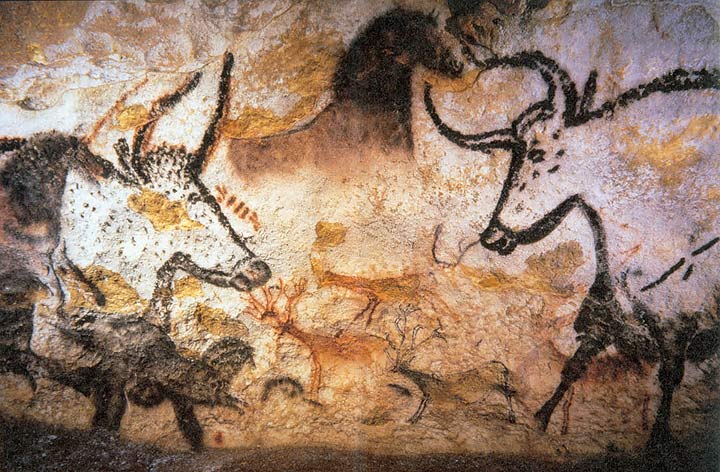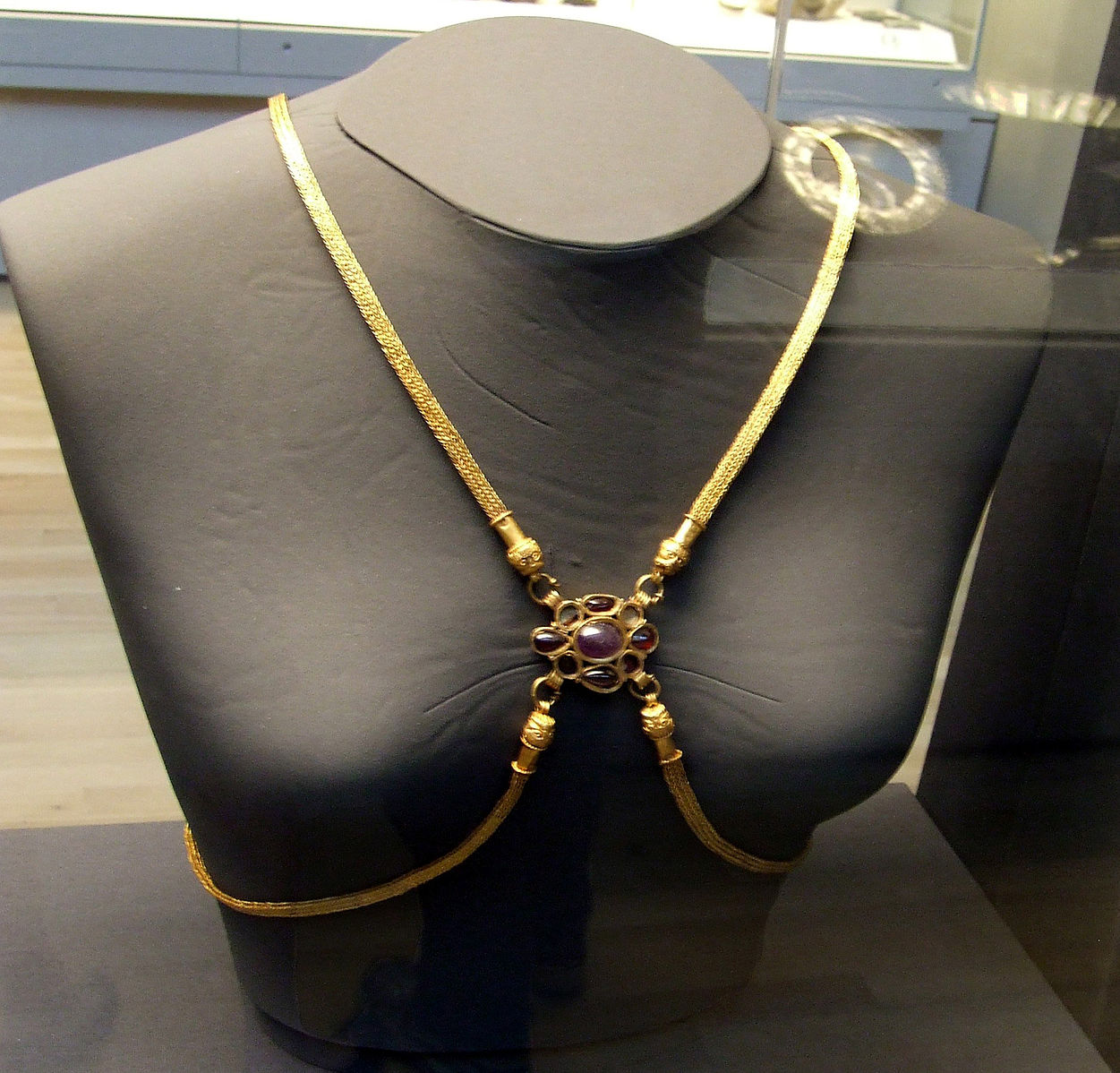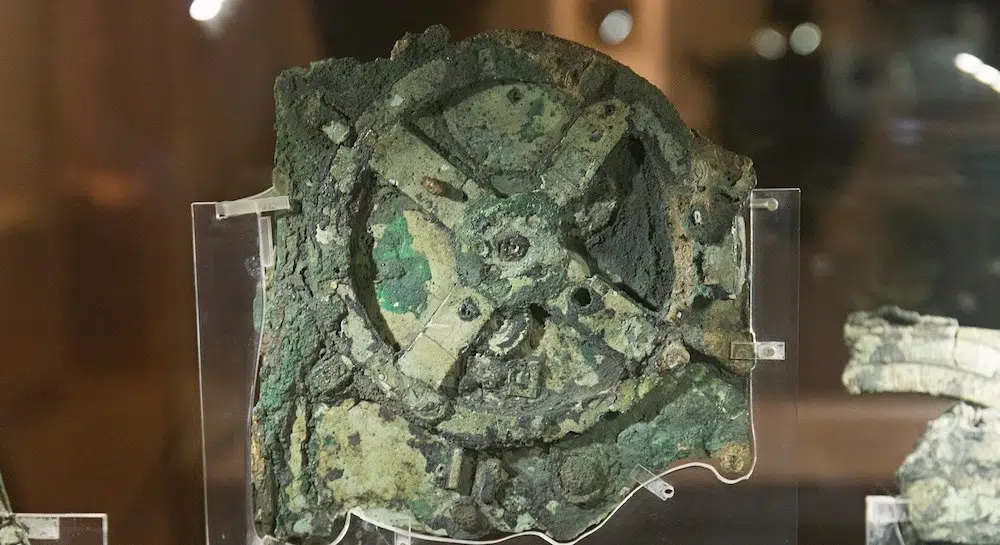
Numerous unexpected treasures have revealed secrets, illuminating the shadows of the past, and solved mysteries. Whether located in ancient caves or on ocean floors, these findings are not only of intrinsic value but also serve as important clues to bygone civilizations.
From the Hoxne Hoard’s Roman riches to the mysterious Antikythera Mechanism, each finding serves as a time-traveling guide, providing insights that help solve historical puzzles and shed light on fascinating ancient tales.
Rosetta Stone, the Egyptian Hieroglyphs Treasure
The Rosetta Stone is one of the most important archaeological discoveries ever made. It allowed scholars to decipher Egyptian hieroglyphs for the first time in over 1,000 years, and it has helped us to better understand ancient Egyptian culture and history. pic.twitter.com/7PCSNDosvP
— Mind and Matter (@ogmindandmatter) November 25, 2023
The Rosetta Stone, a treasure discovered in 1799 during Napoleon Bonaparte’s campaign in Egypt, played a key role in deciphering ancient Egyptian hieroglyphs. Representing a fragment of a larger stone slab, it contains a decree about King Ptolemy V.
This decree, originally inscribed on large stone slabs known as stelae, was placed in every temple in Egypt. While the Rosetta Stone itself is one of these copies, its importance lies in the triple inscription of the decree.
The text appears in hieroglyphs, fitting for a priestly decree; Demotic, the cursive script used in daily life; and Ancient Greek, the administrative language during the Greco-Macedonian rule following Alexander the Great‘s conquest. In total, it contains fourteen lines of hieroglyphic script, thirty-two lines of demotic script, and fifty-four lines of ancient Greek script. It provided scientists with a unique opportunity to decipher hieroglyphs.
Thomas Young, an English physicist, and Jean-François Champollion, a French scientist, managed to crack the hieroglyphic code. Their discoveries in the early nineteenth century laid the foundation for the understanding of ancient Egyptian writing, marking a decisive step in deciphering hieroglyphs that had been lost since the fourth century AD. Nowadays, the Rosetta Stone, is housed in the British Museum.
Dead Sea Scrolls
The Dead Sea Scrolls is collection of ancient Jewish manuscripts, dating back to around the 3rd century BC. The scrolls contain a wide range of religious, historical, and legal texts, providing a unique window into Jewish life and thought during a pivotal period in their history. pic.twitter.com/OZ4KntjxXb
— Mind and Matter (@ogmindandmatter) November 27, 2023
The Dead Sea Scrolls were discovered between 1947 and 1956 in eleven caves near Khirbet Qumran on the Dead Sea’s northwestern shores in what is now known as the West Bank. The first seven scrolls were discovered by Bedouins, followed by subsequent expeditions and findings by both Bedouins and archaeological teams, marking a pivotal moment in the understanding of ancient Jewish communities.
The scrolls date back approximately two thousand years. Comprising fragments and about 950 different manuscripts, they include biblical, apocryphal, and sectarian texts. The biblical manuscripts include around two hundred copies of books from the Hebrew Bible, the earliest known evidence of the biblical text globally.
The scrolls feature Hebrew, the ancient paleo-Hebrew alphabet, Aramaic, and Greek translations of the Hebrew Bible. Additionally, they encompass a distinctive manuscript known as the Copper Scroll, serving as an ancient guide to concealed treasure.
Unlike other texts written in ink on parchment, this intriguing document features Hebrew and Greek letters carved onto metal sheets, possibly for enhanced durability over time. The Copper Scroll, characterized by unconventional language and spelling, outlines sixty-four subterranean locations across Israel believed to harbor hidden riches. Despite the detailed descriptions, none of these caches have been successfully located or recovered.
Hoxne Hoard Treasure

The Hoxne Hoard, discovered in 1992 by metal detectorist Eric Lawes in Suffolk, England, is the largest cache of late Roman gold in the Roman Empire. Lowes immediately reported the discovery and refrained from removing all items from the ground.
It contains approximately fifteen thousand coins, two hundred silver pieces of cutlery, and gold jewelry with a total of 7.7 pounds of gold and 52.4 pounds of silver. Its assessed value is $4.3 million. Lowes’ prompt reporting allowed archaeologists to excavate and preserve the context of the artifacts. A hoard from the end of Roman rule in Britain has provided crucial insight into this transformative period.
Judging by the coins, archaeologists date these treasures to about 450 AD. At the end of the fourth century AD, the western Roman Empire faced upheaval, which led to the withdrawal of Roman troops from Britain to defend mainland Europe. This was thought to have left Britain vulnerable to raids by groups such as the Saxons, Anglosassians and Picts.
In response, the Romano-British inhabitants, anticipating chaos, are believed to have begun hoarding their property, wanting to reclaim it once stability returned. The Hoxne Hoard is a testament to this turbulent period, reflecting the strategic efforts of people to protect their treasures
Lascaux Cave Paintings
The Lascaux Cave paintings, an exquisite testament to Paleolithic art dating back approximately fifteen thousand years, were serendipitously discovered by a group of French teenagers on September 12, 1940. Investigating a fox hole on the Lascaux hill, the boys widened the entrance, revealing a subterranean treasure trove of animal depictions, rituals, and hunting scenes in the Axial Gallery.
Frieze of the Small Horses, Axial Gallery, Lascaux cave. c. 15.500 BC. Lascaux is often called the Sistine Chapel of Prehistory because of its richness of pictures. There are more than 600 paintings –mostly of animals -on the cave's interior walls in impressive compositions. pic.twitter.com/9jpWPnMqof
— Archaeology & Art (@archaeologyart) July 4, 2022
Equipped with a makeshift lamp, the awe-struck teenagers explored the depths of the cave, ultimately sharing their remarkable finding with their teacher. Henri Breuil, a French archaeologist, led the initial study of the cave. By 1948, Lascaux was opened to the public, captivating visitors with its magnificent display of prehistoric art.
The cave’s main cavern and steep galleries showcase approximately six hundred painted and drawn animals, nearly a thousand five hundred engravings, and various symbols. The Lascaux Cave paintings were designated a UNESCO World Heritage site in 1979.
Antikythera Mechanism

Found by Greek sponge divers off the coast of Antikythera in 1901, this ancient Greek analog computer dates back to the first century BC. The device’s complex gear system was used for astronomical calculations, challenging previous ideas about the complexity of ancient technology.
Composed of bronze gears and housed in a case the size of a shoebox, it is the first known scientific dial or scale. With thirty intricate gears, it remained unsurpassed in complexity until the medieval cathedral clock appeared a millennium later. Greek inscriptions on the doors and facades highlight its astronomical and calendar functions.
The main gear is said to be driven by a manually rotating shaft connected to the ring gear, and one revolution corresponds to one solar year. On the front panel, there is a large dial depicting the zodiacal positions of the Sun and Moon, as well as a semi-silvered ball illustrating the lunar phases.
The lunar position transmission includes advanced features such as a planetary gear and spline mechanism to reproduce subtle lunar motion anomalies. This unusual mechanism is a testament to ancient Greek engineering.
See all the latest news from Greece and the world at Greekreporter.com. Contact our newsroom to report an update or send your story, photos and videos. Follow GR on Google News and subscribe here to our daily email!



